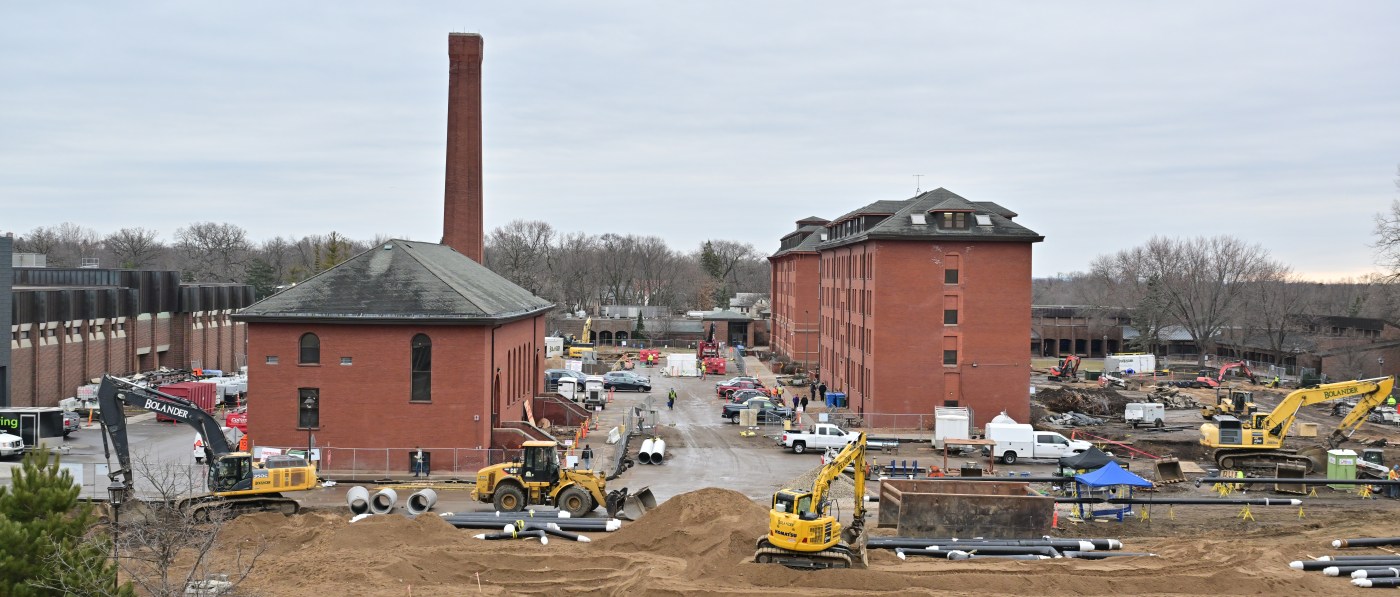
MN Court of Appeals demands new environmental review of St. Thomas arena
When the city of St. Paul examined the potential environmental and community impacts of a new Division I hockey and basketball arena at the University of St. Thomas, it identified five general steps the university could take to offset parking and traffic concerns, such as monitoring event attendance for two years and “keeping the community informed of events.”
That’s not good enough, according to the Minnesota Court of Appeals.
At least four of the five “measures are not specific, targeted and certain,” according to a three-judge Court of Appeals panel, which on Monday ordered the city to redo the Environmental Assessment Worksheet it published in June 2023.
Just as importantly, the judges found, the city should have considered the cumulative impacts of multiple construction projects rolling out in stages. The Schoenecker Center, a $110 million science, technology, arts and math building, opened in February almost directly adjoining the future sports arena, and it too has an impact on parking.
The appellate court decision represents another potential construction delay for St. Thomas, which had demolished buildings in March and soon after set the footings and foundation for the future 4,000-5,500 seat arena. Yet, the decision is only a partial win for arena opponents.
Also: Minnesota Court of Appeals sides with city on Summit Avenue bike trail review
Arena construction was put on hold when neighbors, many of them older homeowners, banded together as Advocates for Responsible Development and filed multiple appeals, including unsuccessful site plan appeals to the St. Paul Planning Commission and then the St. Paul City Council.
Construction resumed in mid-June after the city council denied the site plan appeal, 4-0.
State regulations require an Environmental Assessment Worksheet for new sports or entertainment facilities expected to accommodate 5,000 or more people at peak attendance. The neighbors called for a more thorough type of review known as an Environmental Impact Statement, or EIS, which can be much more costly and time consuming, but the judicial panel did not issue an opinion on whether the project warranted that deeper review.
The judges did find that the city’s EAW overlooked the likely increase in spectator traffic when it considered the potential uptick in greenhouse gas emissions resulting from the arena.
The city found that maximum-capacity basketball games attracting up to 5,500 attendees, which would occur once or twice a year, would produce a shortfall of 742 parking spaces. Similarly, hockey games attracting up to 4,000 attendees likely would occur up to four times per year and leave the area 330 parking spaces short.
“Based on our review, these findings about parking deficits caused by the arena are supported by the transportation study,” Presiding Judge Diane Bratvold wrote. “The transportation study does not consider what impact, if any, events at Schoenecker Center would have on the parking-deficit analysis. This shortcoming must be addressed on remand.”
This story will be updated as further details become available.
Related Articles
In lawsuit, Black pastors blame state, regional housing policies for increasing racial segregation
Letters: Fix our roads first, then maybe, maybe, bike lanes
Pioneer Press celebrates St. Paul’s four MLB Hall of Famers in new book
St. Paul Public Schools is late on its audit. How did that happen and how could that affect the district?
St. Paul man gets 7-year sentence in shooting that injured 3 in home


